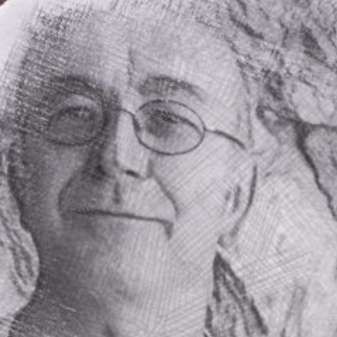There are few better openers to a string quartet recital than Haydn, the man who developed the genre into the democratic dialogue capable of drawing 900 listeners. Few better examples of this democracy exist than the variations which constitute the second movement of his 1796–97 String Quartet in C major Op. 76 no. 3, “Emperor”. The melody, later to become the anthemic “Deutschland, Deutschland über Alles”, is here exposed in a much more gentle setting than one might imagine, and the playing here by the young French ensemble Quatuor Ébène was very sensitive. The melody, always present, passes through the quartet during the following four variations. Especially captivating were Haydn’s exotic harmonisations of the repeated final line. The playing here was more delicate than ever, clarity and sense of line highlighting Haydn’s inventiveness. A short coda, beautifully played, brought this mini-gem to a close.
On the heels of this, the playing in the Menuetto sounded relatively vigorous. The contrasting minor Trio section itself contained a central major section, resulting in a five-part arch form. Could it have been this feature which clinched its programming alongside Bartók’s five-movement, arch-form quartet?
The detached chordal opening of the Finale was delivered with great attack. Raphaël Merlin’s cello, which had provided many oxygenating pedal notes in prior movements, soon launched into a furioso, triplet quaver passage which was to become a significant figure across all instruments in the movement. This was a very impressive opening which prompted a more animated audience response than I can recall for an opening item.
The arch form, employed by Bartók in his 1928 String Quartet no. 4 (and also in no. 5), seems to make instant and easy sense. Certainly it did here as played by Quatuor Ébène. Its fulcrum – movement three, Non troppo lento – features a wide-ranging cello melody which somehow manages to sound both searching and confident. It was beautifully played here, supported by delicate, eerie harmonies from the upper instruments. In the Tranquilo section the dialogue between cello and first violin, supported by tender harmonies was haunting.
The work’s inner layers – movements two and four – feature Bartók the entomologist. The arco swarming sounds of the Prestissimo, con sordino (movement two) contrasted with the scurrying of the Allegretto pizzicato (movement four). The virtuosity of both was impressive.
The outer layers boast the quartet’s most strident writing – and playing. Counterpoint abounds and the ferocious individuality of the parts results in group of notes being written across barlines. Sounding like this had been many composers’ aim; actually writing it like that is quite another matter. The playing here was joyously vigorous especially in the finale, a heavy-metal Allegro molto, which ends with exactly the same phrase as the opening movement. This is one of my favourite movements in all music and I would recommend it to anyone seeking to convince teenagers that classical music is not for sissies. Nothing can follow this movement, especially the way it was played here, apart from the interval.
Democracy in action continued on the quartet’s return, Pierre Colombet now playing second fiddle to Gabriel Le Magadure’s first. The sole item in this half was a work by Mendelssohn billed as String Quartet no. 2 in A major/minor, Op. 13. Interplay between tonalities was a key part of the enjoyment. The high point of this quartet was, for me, the Adagio which featured an impassioned contrapuntal sequence whose inherent tensions were wonderfully paced here. The elegant, old-world charm of the following Intermezzo’s outer sections felt all the more calm for that, contrasted by more animated playing in the central section. The final Presto featured not only some virtuoso, almost Gyspy-style showcasing for the first violin but also some nifty paired work with the second violin. A lover of Bach and counterpoint, Mendelssohn peppered his work with contrapuntal writing and this movement boasts a fugal section which allowed us one final chance to enjoy this quartet’s excellent balance and ensemble.
Quatuor Ébène are famed for daring programming and I was keen to see what they were about to offer as an encore following a fabulous reception. Music stands cast aside, violist Mathieu Herzog announced an arrangement of Miles Davis’ “All Blues” from his seminal 1959 Kind of Blue album. Having heard many cringeworthy attempts at jazz by classical ensembles, I was happy to be put at ease by the great feel they exhibited in this fine arrangement. Herzog’s rendering of the melody was “cool”. Colombet and Merlin featured in solos and I was delighted to hear some “outside playing” in the former. Two musician friends I met agreed that it was impossible to be sure if these solos were pre-written or improvised. If improvised, then these guys really have it all.


